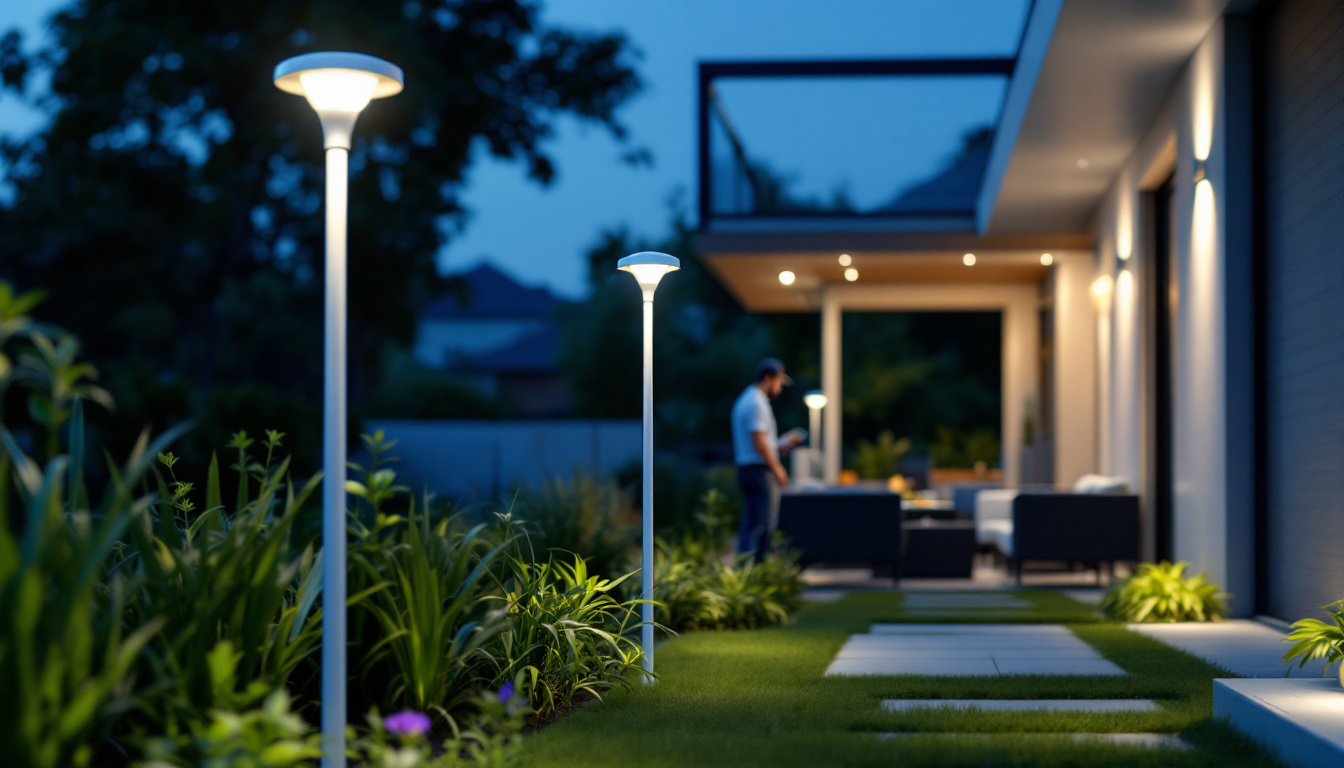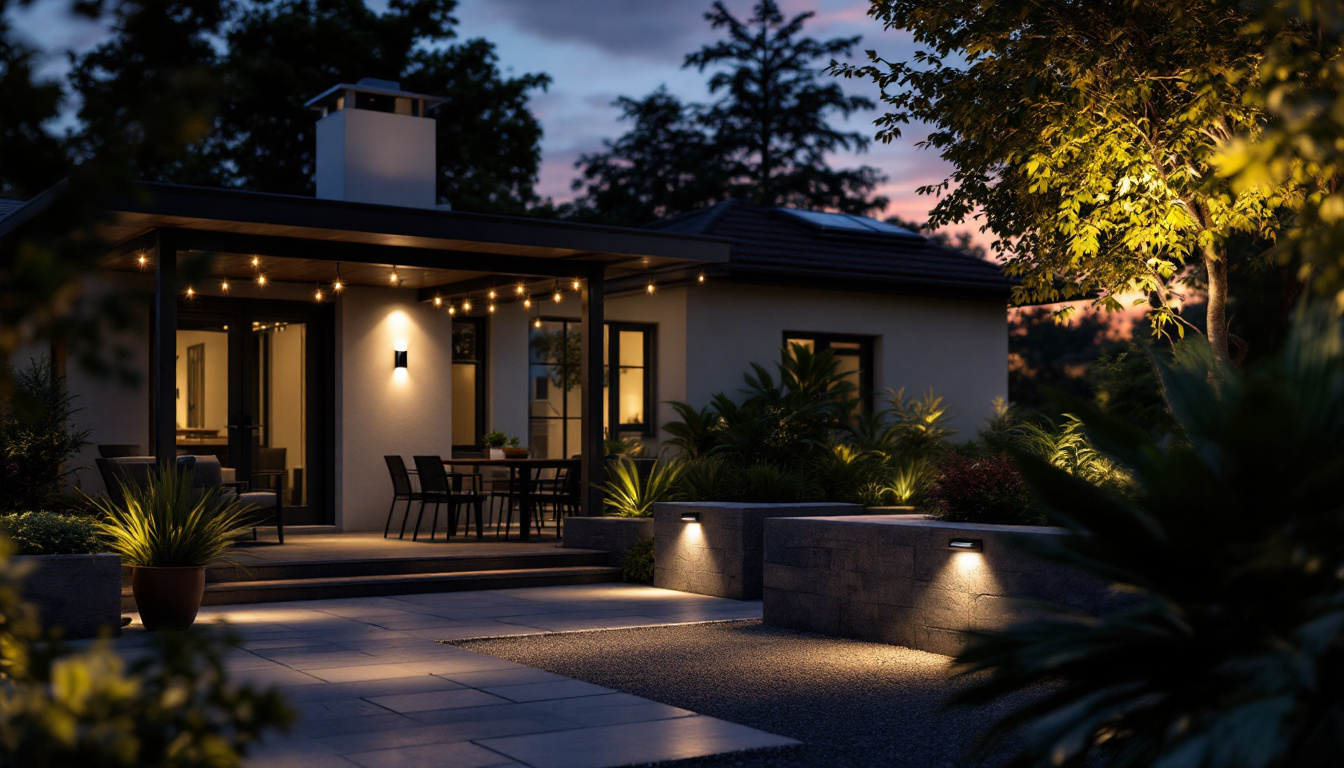

As the demand for energy-efficient lighting solutions continues to grow, LED bulbs have emerged as a popular choice for residential applications. Lighting contractors play a crucial role in guiding homeowners through the selection and installation process of these advanced lighting options. This article provides expert insights and practical advice for lighting contractors to effectively recommend and implement LED bulbs in home settings.
LED (Light Emitting Diode) technology has revolutionized the lighting industry. Unlike traditional incandescent or fluorescent bulbs, LEDs convert electrical energy directly into light, resulting in greater efficiency and longevity. Understanding the fundamental principles of LED technology is essential for lighting contractors to make informed recommendations to clients.
One of the most significant advantages of LED bulbs is their energy efficiency. They consume significantly less power compared to incandescent bulbs, which translates to lower electricity bills for homeowners. Additionally, LEDs have a much longer lifespan, often lasting up to 25,000 hours or more, reducing the frequency of replacements.
This longevity not only benefits homeowners financially but also minimizes waste, aligning with environmentally friendly practices. Contractors should emphasize these points to clients, highlighting the long-term savings and sustainability associated with LED lighting. Furthermore, the reduced heat output of LEDs means that they are safer to use in various applications, decreasing the risk of burns or fire hazards. This characteristic makes them particularly suitable for use in enclosed fixtures or in areas where heat buildup could be a concern.
LED bulbs are available in various color temperatures, measured in Kelvin (K). This range allows homeowners to choose the ambiance they desire in their spaces. For instance, lower Kelvin values (around 2700K) produce a warm, cozy light suitable for living areas, while higher values (5000K and above) emit a cooler, daylight-like brightness ideal for workspaces.
Contractors should educate clients on how to select the right color temperature for different rooms. It’s also essential to discuss the Color Rendering Index (CRI), which measures how accurately a light source displays colors. A CRI of 80 or above is generally recommended for residential settings to ensure that colors appear vibrant and true to life. Moreover, the advancements in LED technology have led to the development of tunable white LEDs, which allow users to adjust the color temperature dynamically throughout the day. This feature can enhance mood and productivity, making it a valuable option for both home and office environments.
With a plethora of LED options available, selecting the right bulbs can be overwhelming for homeowners. Lighting contractors can simplify this process by offering guidance on various factors that influence bulb selection.
Homeowners often associate wattage with brightness, but with LED technology, this relationship has changed. LED bulbs use significantly fewer watts to produce the same amount of light as traditional bulbs. For example, a 10-watt LED can replace a 60-watt incandescent bulb while providing similar brightness.
Contractors should provide clients with a wattage equivalency chart to help them understand how to choose the right LED bulbs based on their lighting needs. This can prevent confusion and ensure that clients select bulbs that meet their expectations for brightness and energy efficiency. Additionally, it’s beneficial to educate clients about lumens, the measurement of light output, as this can further clarify the brightness levels they can expect from different wattages. By focusing on lumens rather than watts, homeowners can make more informed decisions that align with their specific lighting requirements, enhancing the overall ambiance of their spaces.
Many homeowners enjoy the flexibility of dimmable lighting, but not all LED bulbs are compatible with existing dimmer switches. When recommending LED options, contractors should inform clients about the importance of choosing dimmable LED bulbs and ensuring that their dimmer switches are compatible with these new technologies.
Contractors can also suggest upgrading to modern dimmer switches designed specifically for LED use, which can enhance the performance and longevity of the bulbs. This proactive approach can help avoid flickering or buzzing, common issues that arise when using incompatible dimmers. Furthermore, it’s worth discussing the benefits of smart dimmers that can be controlled via smartphone apps or voice commands, providing an added layer of convenience and customization. These smart solutions not only allow for precise control over lighting levels but can also integrate with home automation systems, making them an attractive option for tech-savvy homeowners looking to enhance their living spaces.
proper installation is key to maximizing the performance and lifespan of LED bulbs. Lighting contractors should be well-versed in the best practices for installing these fixtures to ensure optimal functionality.
Although LED bulbs generate less heat than traditional bulbs, they still require adequate heat dissipation to maintain performance. Contractors should ensure that fixtures are designed to accommodate LED technology, with proper ventilation to prevent overheating.
When installing recessed lighting, for example, it’s vital to use housings that allow for airflow. This not only extends the life of the bulbs but also enhances overall lighting performance. Educating clients on the importance of heat management can further reinforce the value of professional installation.
Not all fixtures are suitable for LED bulbs. Some older fixtures may not provide the necessary support for the unique characteristics of LED technology. Contractors should assess existing fixtures and recommend replacements or modifications as needed.
For instance, if a homeowner wishes to upgrade to LED bulbs but has outdated sconces, it may be beneficial to suggest modern fixtures designed specifically for LED use. This ensures that the lighting system operates efficiently and effectively, providing optimal results for the homeowner.
While LED bulbs require less maintenance than traditional lighting options, contractors should still educate homeowners on proper care and upkeep to ensure longevity and performance.
Dust and debris can accumulate on light fixtures over time, diminishing the quality of light output. Contractors should advise clients on the best practices for cleaning LED fixtures, emphasizing the importance of using soft, dry cloths to avoid damaging the bulbs.
Additionally, homeowners should be encouraged to regularly check for any signs of wear or malfunction, such as flickering lights or unusual noises. Prompt attention to these issues can prevent more significant problems down the line.
As sustainability becomes increasingly important, contractors should inform clients about the proper disposal and recycling of LED bulbs. Unlike traditional incandescent bulbs, which can be discarded in regular trash, LED bulbs contain electronic components that require special handling.
Contractors can provide information on local recycling programs or drop-off locations for used LED bulbs, encouraging environmentally responsible practices among homeowners. This not only benefits the environment but also positions contractors as knowledgeable and responsible professionals in the eyes of their clients.
Beyond functionality, LED lighting can significantly enhance the aesthetic appeal of a home. Contractors should be equipped with knowledge on how to utilize LED technology creatively to elevate the design of residential spaces.
LEDs can be used to create stunning accent and task lighting effects. By strategically placing LED strips or recessed lights, contractors can highlight architectural features, artwork, or landscaping, adding depth and character to a home.
For task lighting, such as in kitchens or home offices, LED fixtures can provide focused illumination that enhances functionality while maintaining style. Contractors should collaborate with homeowners to understand their design preferences and recommend LED solutions that align with their vision.
The rise of smart home technology has also influenced the lighting industry. Smart LED bulbs offer homeowners the ability to control their lighting remotely, customize color temperatures, and set schedules for energy efficiency.
Contractors should stay informed about the latest smart LED options and their compatibility with various home automation systems. By offering these innovative solutions, contractors can help homeowners create a modern, convenient, and energy-efficient living environment.
While LED lighting offers numerous benefits, lighting contractors may encounter challenges when transitioning clients from traditional lighting to LED solutions. Addressing these challenges proactively can enhance customer satisfaction and build trust.
One of the primary concerns homeowners may have is the initial cost of LED bulbs compared to traditional options. Contractors should be prepared to explain the long-term savings associated with LED technology, including reduced energy bills and fewer replacements.
Providing a cost-benefit analysis can be an effective strategy. By demonstrating the return on investment over time, contractors can help clients see the value in choosing LED lighting solutions.
Some homeowners may be resistant to changing their lighting systems, particularly if they have grown accustomed to traditional bulbs. Contractors should take the time to educate clients about the benefits of LED technology, addressing any misconceptions and highlighting the advantages of modern lighting solutions.
Offering demonstrations or showcasing successful projects can also help alleviate concerns. By presenting tangible examples of LED installations, contractors can build confidence in their recommendations.
As the lighting industry continues to evolve, lighting contractors play an essential role in guiding homeowners toward effective and efficient lighting solutions. By understanding LED technology, choosing the right bulbs, ensuring proper installation, and addressing common challenges, contractors can enhance their service offerings and build lasting relationships with clients.
Incorporating LED bulbs into residential lighting designs not only improves energy efficiency but also contributes to a more sustainable future. By staying informed and proactive, lighting contractors can position themselves as trusted experts in the field, ultimately benefiting both their businesses and their clients.
Ready to elevate your lighting projects with the efficiency and sustainability of LED bulbs? Look no further than LumenWholesale, where we offer an extensive selection of top-quality, spec-grade lighting products at wholesale prices that can’t be beaten. Say goodbye to local distributor markups and hello to superior lighting solutions that meet the highest industry standards. With free shipping on bulk orders, LumenWholesale ensures you get the premium lighting you need at the best value — all with the convenience and affordability you deserve. Wholesale Lighting at the Best Value is just a click away. Make the smart choice for your business and your clients with LumenWholesale.

Discover essential tips and expert advice for lighting contractors on installing and troubleshooting fan light switches.

Discover why purchasing outdoor lighting in bulk from local distributors might not be the best choice.

Discover why staying updated on LED and solar lighting technologies is crucial for lighting contractors.

Discover how solar flood lighting is revolutionizing outdoor illumination, offering sustainable and efficient solutions for modern needs.
Get notified when NEW deals are released.
Optimize your budget with wholesale discounts.
Only top-quality, specification-grade lighting products.
No additional costs at checkout - what you see is what you pay.
We understand the unique needs of contractors.